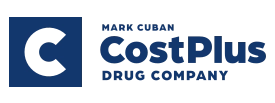Architectingcustommicroservicestostore&analyzemassiveamountsofmedicaldevicedata
Codal partnered with Baxter to design a scalable microservices architecture and intuitive mobile app that transforms massive amounts of CRRT device data into actionable insights, empowering sales reps to better support hospitals in improving ICU performance and patient care.
SECURE DATA FLOW
from cloud to app, in real time
ACTIONABLE INSIGHTS
data points simplified into KPIs
ANYWHERE ACCESS
offline-ready app for sales reps

Baxter has a long history of developing transformative medical devices, which millions of patients and healthcare personnel depend on every day.

The challenge

The solution

Creating a microservices back-end and user-friendly front-end for superior data analytics

The result
Massive amounts of medical device data transformed into actionable insights
Industry
Platform / Partner
Related case studies


Streamlining data exchanges between insurers and law firms to drive efficiency & improve claim outcomes
Streamlining data exchanges between insurers and law firms to drive efficiency & improve claim outcomes


Elevating a B2B distributor’s eCommerce experience with a custom platform
Elevating a B2B distributor’s eCommerce experience with a custom platform


Revamping the backend system for Cost Plus Drugs to streamline operations & boost prescription fulfillment
Revamping the backend system for Cost Plus Drugs to streamline operations & boost prescription fulfillment


Empowering a healthcare company's data management with a unified dashboard
Empowering a healthcare company's data management with a unified dashboard


Transforming cpap.com's digital experience with Shopify & AI-powered prescription processing
Transforming cpap.com's digital experience with Shopify & AI-powered prescription processing


Simplifying financial compliance for 1.8 million clients
Simplifying financial compliance for 1.8 million clients


Streamlining vehicle maintenance through a custom, modern portal
Streamlining vehicle maintenance through a custom, modern portal


Centralized accreditation hub for medical boards
Centralized accreditation hub for medical boards

Curious about what’s possible?
If this case study sparked ideas, let’s talk. From strategy and experience design to unified commerce and product engineering, Codal helps ambitious brands turn vision into reality.
By submitting this form, you agree to be added to Codal's marketing database, where you can opt out at any time.